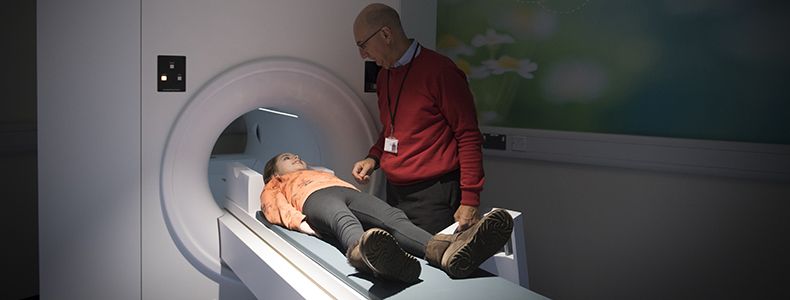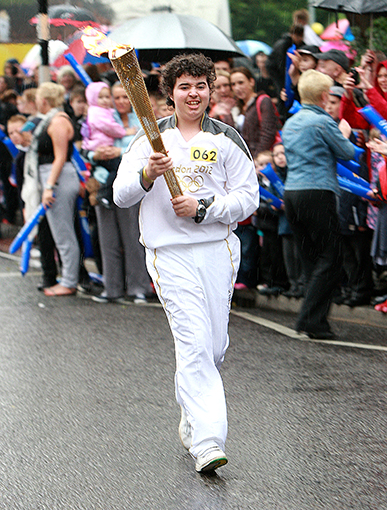
Living with 'scanxiety'
You may not have heard of the term ‘scanxiety’ before, but anyone who has experienced cancer is likely to be familiar with this gut-wrenching feeling. The claustrophobic MRI scan followed by days of uncertainty waiting for test results, can create exhausting emotional rollercoasters that are hard for anyone to bear, especially children.
In the four years that he lived with a brain tumour, Newark teenager Sam White endured more than 25 scans. This is Sam’s story, told by his parents Mike and Pam.
“Sam’s first MRI scan couldn’t have been a worse experience,” recalls Mike. “He had been drifting in and out of consciousness for five days after he collapsed. He couldn’t see, he couldn’t speak and didn’t have movement down his right side.”
“Unfortunately, he regained consciousness during the scan,” said Pam. “The noise and claustrophobic space just terrified him. Mike had to lay across Sam’s legs and physically hold him, but he fought so much we had to stop the scan. It was terribly distressing for all of us. Scans became something to fear. You could see the physical change in him when they were mentioned. It was like flicking a switch.”
Sam was diagnosed with a brain tumour aged 12. For 18 months, he needed a general anaesthetic for every scan. Ultimately, he conquered his fear with help from a clinical neuropsychologist.
“He developed a very specific routine,” explains Pam. “We stayed in the room with him, sometimes for up to two hours. Mike would hold Sam’s right ankle and me his left. Through self-hypnosis, Sam was able to go to a special place in his mind. He listened to music – Michael Bublé was a favourite.”
Just over a year after he was diagnosed, Sam was told his tumour was gone.
“It was a glorious moment” remembers Mike. “He was cancer-free for a year but we were always anxious about the next scan.
“Every time we went in, we would carefully study the team and try to second-guess the result from their body language and questions.”
“We tried to carry on as normal while waiting for the results call,” adds Pam, “but it was like waiting for a sentence.

Sam carried the Olympic torch ahead of the London 2012 Olympic Games
Even when good news came, the cycle would start again in preparation for the next scan. After the fourth scan, the hospital called quickly so we knew what that meant.”
Sam died from an infection in 2013, aged just 16. In 2016, The Sam White Legacy, the charity set up in his memory, were one of a number of donors who funded a mock MRI scanner and refurbished scanner suite at Nottingham University Hospitals Queen’s Medical Centre, to help familiarise children and their families with the experience.
“It’s good that something which began so very badly has turned into something so positive, and Sam’s idea and determination helped make it happen.”
“It was too late for Sam but this new mock scanner will hopefully help take the fear out of the scanning process for children needing treatment today” explains Mike. “It’s good that something which began so very badly has turned into something so positive, and Sam’s idea and determination helped make it happen.
“As a parent, initially you have no idea about how to behave in a scanning room – where to stand, and the do’s and don’ts. Treatment will never be pleasant but innovations like this really do make a massive difference for everyone involved, and that’s something Sam would be truly delighted about.”
---
You may also be interested in:
The people behind the papers
Meet six researchers who work tirelessly behind the scenes creating a brighter future for children with brain tumours.
At the lab bench
Thanks to your support, our breast cancer research is making good progress. We asked our researchers to share how they have used your gifts.
Join us for the launch of the Nottingham Breast Cancer Research Centre
Discover more about our exciting plans for the centre, hear talks from patients and researchers and go behind-the-scenes with laboratory tours.